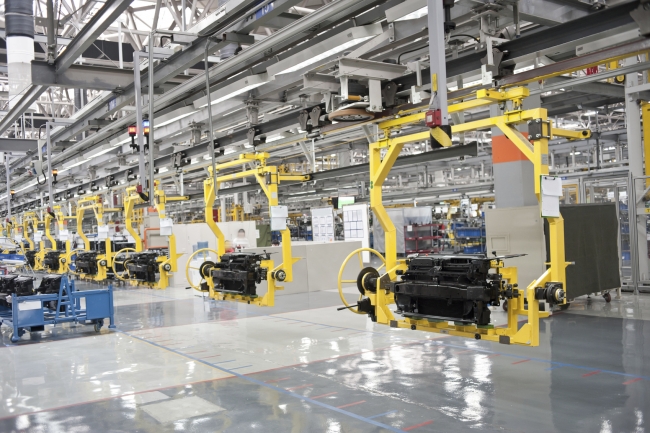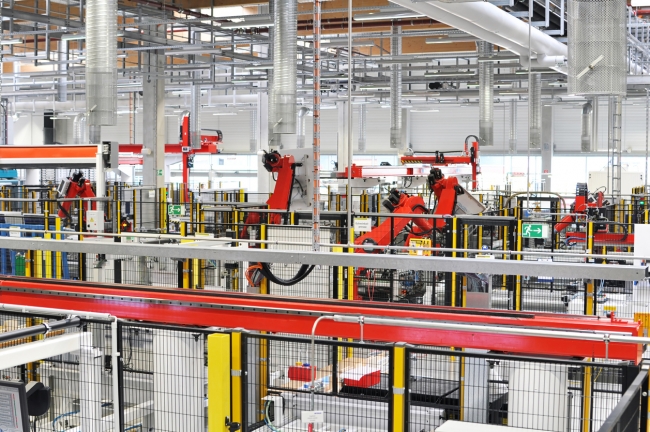5 minute read • published in partnership with Evocon
Insight: How do operations managers benefit from OEE systems?
An operations manager is a crucial part of the management team in the manufacturing sector. They have multiple responsibilities, including coordinating operators, monitoring processes, expediting material flow, and defining and executing plans to deliver annual performance targets. Considering this heavy workload, there is one thing that can make the life of operations managers much easier — OEE software. Evocon explores why it’s so important and the opportunities it provides.
When you think of a random day on the shop floor, what comes to your mind? Several meetings? Employee or maintenance related issues? Unexpected problems (waiting to be solved right away)? Or just, all of the above?
In manufacturing, especially in the production department, there’s always a lot to manage, a lot to accomplish. Even though a successful outcome on the shop floor is the result of good teamwork, there is still one person who is responsible for every single step in the production process — the operations manager.

An operations manager needs access to reliable, accurate data to base decisions on real shop floor insights / Picture: Getty/iStock
To discover how OEE can benefit operations managers, firstly, we need to know who they are and what their tasks consist of.
What do operations managers do?
In the manufacturing world, operations managers are responsible for the supervision and oversight of daily operations management along with administrative tasks. Briefly, we can divide their functions into three main categories — production planning, process control, and quality control. These stages refer to the pre-, actual, and post-production processes.
Regardless of the size or industry of the organisation, the tasks of an operations manager include:
• Managing end-to-end production processes, monitoring progress, and expediting material flow.
• Maintaining and improving production processes through observation and analysis of resulting output.
• Ensuring labour and material are scheduled and available for the daily production schedule.
• Leading the planning, scheduling, setup, and running of production teams and plant activities.
• Supervising multiple direct reports from the leadership team for the processing and auditing of shift efficiencies.
• Improving process workflow by eliminating stoppages.
• Analysing delays.
• Testing new methods if necessary.
• Recording production by completing daily shift production reports; calculating yields and recoveries.
• Defining and executing plans to deliver annual performance targets for financial and production metrics.
• Monitoring work performance and providing feedback.
• Creating processes and procedures that optimise the profitability of the production line.
• Managing the dispersal and distribution of materials for production.
• Coordinating maintenance of production equipment.
• Overseeing process control and quality control.
• Testing/monitoring plant processes and implementing improvements as needed.
• Maintaining process flow by communicating production status, requirements, and problems to the next shift.

The more operations managers evaluate and analyse data, the more they diagnose the problems and have an idea about the root causes behind all the issues / Picture: Getty/iStock
What kinds of challenges do operations managers face?
Operations managers basically ensure production facilities are operating efficiently. They are the ones who ‘make it real’ in terms of transforming ideas into outputs — transforming resources into goods and services on the shop floor.
Their responsibilities include a wide variety of tasks — they do not only oversee the performance of employees but also equipment function, systems and policies, technology, and ultimately the finished product. At the end of the day, the operations manager has the most direct interaction with every step of the production process out of everyone involved, which makes their management abilities even more crucial.
Operations managers have to identify the pain points in the production process.
One of the main challenges the operations manager faces daily is identifying the pain points on the shop floor. Once the problems are defined, they look for ways to make the necessary improvements; be that related to maintenance, employee performance, materials, or scheduling issues. That requires a meticulous planning process as well as consistent production monitoring.
When creating and executing their plans, operations managers always question if they have enough capacity to deliver the goals which have been set. If not, they assess if there is a need to increase the number of employees, improve the skill set of the existing team, purchase more materials, or take any other action necessary to optimise production.
In a nutshell, the operations manager has to keep an eye on every single step in the production process. They need access to reliable, accurate data to base decisions on real shop floor insights. This need is precisely what makes an OEE system hugely necessary for operations managers.
How can OEE software benefit operations managers?
An OEE system helps manufacturing teams monitor their production process, providing them with real-time data. The production team can, therefore, get an idea about the current problems, where they lose time (and money) and what the bottlenecks are. Moreover, it enables them to predict future issues and come up with solutions.
More time, more gain.
Considering the operations manager’s never-ending tasks, the first OEE software benefit is time management. OEE systems are practical and easy-to-use tools. They help to allow for more efficient use of time.
As operations managers are responsible for the whole production process — pre-production, production, product quality control — what they need the most is real-time, accurate data to make the right decisions at every step of the process. By using an OEE system, they immediately have access to real-time data from their plants and machines, thus saving more time compared to manual OEE tracking. Using OEE system, they don’t have to rely on the paperwork provided by operators anymore or wait for the final reports to be on their desks —they have reliable yet straightforward OEE support.

OEE software is used to optimise the whole production process and to reduce production losses / Picture: Getty/iStock
Decisions based on facts, not guesses.
How long did the planned stops last? How many defects produced in the last shift? Why did the planned stops last longer than expected?
These are some of the questions that operations managers ask all the time. So, what they need to make reliable decisions to solve these issues is accurate data, so that they can turn these numbers into useful insights — numbers don’t lie.
The more operations managers evaluate and analyse data, the more they diagnose the problems and have an idea about the root causes behind all the issues. And finally, the results are more reliable decisions based on accurate data, driven from real shop floor insights.
Better management and coordination.
In manufacturing, the way employees operate defines the outcome of the whole process. Therefore, operations managers need to make sure shifts are coordinated efficiently and that the team of operators is performing at their best. In that sense, what helps them in coordination and management is the OEE system.
When used consistently, an OEE tool can provide operations managers with all the information regarding planned stops, which also consist of shifts and changeovers. So, they can have an idea about the performance of the operators; when and where the problems are occurring.
When is the most time lost? What are the root causes? How can changeover times be optimised? The answers to these questions lead operations managers to make decisions that help reduce the time lost and to come up with more efficient management ideas.
Reducing production losses.
Aside from their long list of tasks, operations managers aim for production output that aligns with their targets. During the production process, their priority is to diagnose the problems and develop solutions for maximised results. To achieve this, they have to optimise the whole production process — to reduce production losses.
OEE software acts as the best tool to monitor process performance, providing operations managers with information about production losses. Once they discover more about the bottlenecks and root causes, they can improve asset utilisation and develop solutions to maximise the performance of equipment.
By implementing OEE, operations managers can act proactively as well —they can much more easily anticipate events such as unplanned machine downtime or reduced production speed. Solving the technical issues becomes less of a burden as there is the opportunity to track the entire process from beginning to end.
Competitive benchmarking
In manufacturing, everything needs to be measured and explained numerically so that companies can track their progress based on solid metrics. Furthermore, knowing all the numbers allows operations managers to better benchmark with competitors, providing the opportunity to make a more reliable comparison.
Which decisions resulted in increases in the OEE scores? What is the difference between last weeks and the current quality scores? What is the average OEE score set in our industry?
The answers to these questions define the path to success for an organisation. They are exactly what OEE software provides operations managers with for better competitive benchmarking.
Operations managers are the heart of the shop floor, responsible for every single step in production. When they fully benefit from OEE software, they can solve and foresee issues, and maximise the outcome in the long-run.

